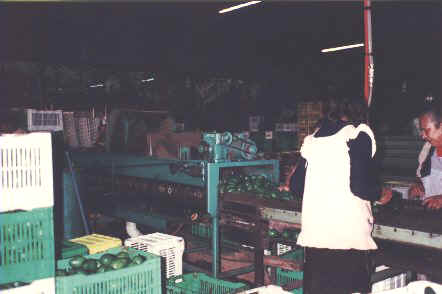The Chayanovian Alternative
Vertical Concentration
The dynamic processes of agricultural proletarianisation and concentration of production, leading to large-scale agricultural production units based on hired labour, are developing throughout the world at a rate much slower than was expected at the end of [the] nineteenth century
Chayanov turned to the sugar-beet contract farming agroindustry which had emerged on the Western borders of Russia for an alternative vision of the future of capitalist development in agriculture. This vision is based on the idea that the vertical concentration of large-scale capitalist investment in processing and marketing will prove more profitable than horizontal concentration in large scale farming units. Working from this idea, Chayanov proposed a series of stages of capitalist transformation of peasant agriculture:
- Peasants are drawn into commodity production by merchant- userer’s capital. This is a process which has characterized much of the peasant agriculture of the Third World in the past. The merchant advances seed and credit for production and consumption at the start of the agricultural production cycle, in return for either a share of, or even the whole of the harvest. There are many variations on this theme. Sometimes interest payments are disguised: the merchant buys the harvest when prices are lowest, at the time of the harvest, and waits until prices rise to make profit. In the regions of Mexico in which I have worked merchants often demanded that double the original loan be repaid, and therefore made even more money.
- The next stage is that capitalists try to interfere more directly in the organization of production, by laying down technical and minimum quality conditions, for example. This has become typical of modern agri-business based on contract farming. Modern agribusiness, however, also tends to supply machinery and other specialized inputs, such as chemical fertilizers, pesticides and herbicides, which are the products of modern industries (dominated by transnational companies).

Picture shows an avocado packing plant, Michoacán
In a third stage, processing of raw materials and input supply is taken out of the hands of the family farm entirely. Big capital invests in these sectors, along with transport, grain elevators, packing plants and other facilities. Ownership and control of processing and marketing are concentrated in the hands of a small number of corporate capitalist enterprises, so that, as Chayanov put it: "the farmers are converted into a labour force working with other people’s means of production".
As a prediction of the future, this aspect of Chayanov’s analysis was really quite prescient. He himself, of course, wanted to argue for the development of Soviet agriculture on a non-capitalist basis, with popular, self-managing, cooperatives taking on the functions performed by big capital in capitalist countries. But the wider implication of his analysis is that 'classical' development of a capitalist agriculture in Lenin’s sense is only possible where:
- Capitalists have particularly fertile land, which gives them ‘superprofits’ through the mechanism of differential rents;
- Capitalists enjoy a protected domestic market;
- Capitalists enjoy very depressed wage levels.
The second two conditions have often been found historically in 'Third World' countries. But even assuming that the conditions are there for capitalist farms to compete with middle peasants in purely economic terms, their ability to do so will depend on whether agrarian interests can remain politically dominant if national industrial capitalist interests, or transnational companies which can influence state policies, find advantages in exploiting a peasant agriculture. In general, we can conclude that:
- socioeconomic transformation is conditioned by processes of class struggle which operate through the national state, although international capitalist interests may also be salient;
- different patterns of capitalist development in agriculture were to be expected in different regions of the world economy, at least for a while.
Nevertheless, despite Chayanov's foresight in recognising the significance of agribusiness development through vertical concentration, there are other respects in which his models obscure quite fundamental transformations of rural livelihood strategies throughout the world, transformations which make it increasingly difficult to conceptualize rural people as "peasant farmers" in any classical sense.


